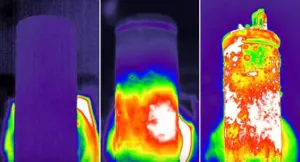A portable energy storage battery is also called a large mobile battery, an outdoor emergency battery, and an outdoor uninterrupted battery.
The portable energy storage battery was developed to solve the power shortage. This energy storage battery can be powered independently from the grid and can efficiently use solar power. The lithium battery has a large capacity for electricity storage, which is then converted into various AC and DC power for people’s daily use.
The concept of the portable energy storage battery is Power Station, which has power generation, power storage, substation, power supply, monitoring, software and hardware protection, frequency modulation, fault self-test, fault recovery, and several major functions. Miniaturization of energy storage power stations.
The biggest feature of the “portable energy storage battery” is that it can get rid of the restrictions of “wires” and provide various electrical appliances with long-term power supply, alternating current and direct current, and is lightweight and portable.
&nsph;
Scope of portable energy storage battery
Flood control emergency command, power emergency repair, emergency command vehicle, mobile communication vehicle, outdoor construction, field exploration, natural disaster site rescue, car start-up, emergency reserve, and other various large-scale construction operations, accident repair, emergency rescue and other scenes for mobile lighting.
At the same time, it can be used in mountainous areas, pastoral areas, field trips, travel, and leisure, or in cars and ships without electricity. They can be used as DC and AC batteries.
It can also be used in emergency rescue, emergency battery, backup battery, and other usage scenarios.
Then the safety of portable energy storage batteries is also a part of our attention. We need to test the energy storage batteries to ensure that electricity can be safely provided in various environments.
There are many aspects of portable energy storage batteries that need to be tested, such as thermal runaway, impact, crush, rain, short circuit, drop, etc. Here we mainly introduce crush, short circuit, thermal runaway.
Energy storage battery crush test

Examine the safety performance of the battery through the crush test. After the test, the battery should not fire or explode. Crush the battery directly until the battery case ruptures or shorts internally (the battery voltage becomes 0V).
The servo computer battery crush tester simulates the situation of squeezing various types of lithium batteries during use. Artificially present different situations that may occur when squeezing a battery and use the computer to operate, more precisely.
Storage battery short-circuit test

Check the safety performance of the battery through the short circuit test. There is no open flame or explosion after the battery short circuit test. According to the short-circuit test requirements, the short-circuit current must be less than 5mΩ to reach the maximum current.
Storage battery thermal runaway test

The thermal runaway test is used to verify the safety performance of the battery. The thermal runaway test is actually to ensure that when the thermal runaway of the monomer occurs, the system must have accurate feedback. The feedback signal must not be missed or falsely reported. Ensuring that the battery system’s safe handling plan has sufficient start-up time and requires that the battery system has a certain ability to inhibit or delay thermal runaway diffusion to ensure that personnel can assess the severity of the accident and reserve sufficient evacuation before its destructive power threatens personal safety time to prevent further harm to the person.
We hope our battery test chamber will help you keep your portable energy storage battery safe.
